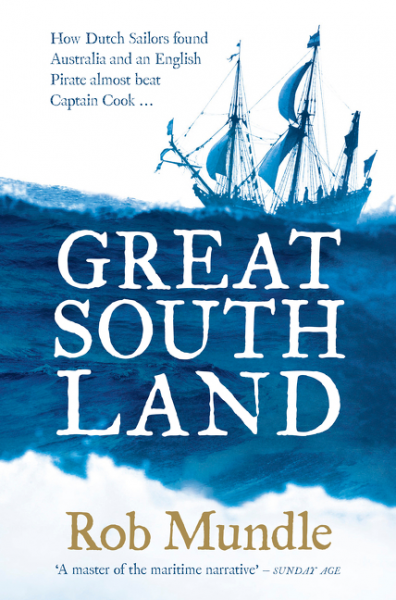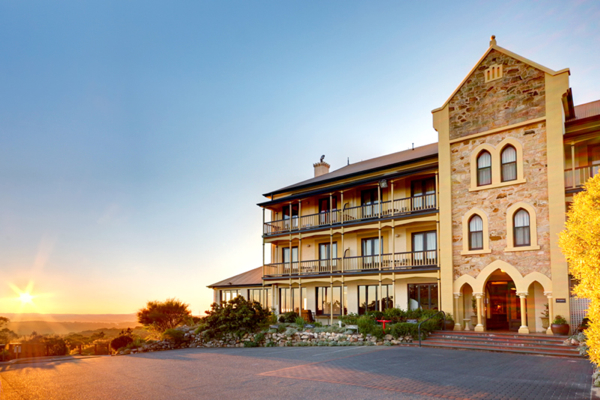
Review: Great South Land. By Rob Mundle. Published by ABC Books.
Just like the people he writes about, salt water flows through Rob Mundle’s veins. As a journalist with a passion for sailing, he has covered much of Australia’s marine history and events. His account of the tragic 1998 Sydney to Hobart Yacht Race in the Fatal Storm was a gripping tale from someone who has actually sailed in the race three times himself. He has written about Bligh, Cook, Flinders and the First Fleet, so it was probably inevitable that he should turn his attention to the European sailors who first set foot on Australia.
Great South Land is the fascinating story of the Dutch sailors who were literally blown onto the coast of West Australia and the intrepid William Dampier, navigator, pirate and explorer, all of whom never quite determined that Australia was in fact a large island. Most of the history that we were taught at school started with Captain Cook and may have briefly mentioned Dirk Hartog or Abel Tasman, but I don’t remember anything about Willem Janszoon or Jan Carstensz. Janszoon, in fact, was the first known European to set foot in Australia in 1606 and as Michael Caine would say, “not many people know that”. The most lasting evidence of those early Dutch voyages is the many places that bear names given by those seafarers – places with names such as the Gulf of Carpentaria, Arnhem Land and Van Diemen’s Land.
Australia could well have been a Dutch colony except that the Dutch were much more interested in trade than in colonization and found nothing valuable or promising on the west coast of New Holland. It was only the weather, lack of drinking water and the limitations of their ships that stopped the Dutch from discovering the Torres Strait and the east coast of the Great South Land. As Mundle speculates, if they had discovered it, then it may well have been a very different story and a different history. But their voyages and charts enabled those who followed to make that discovery.
Mundle says that the Dutch opened the door and the English sailed through it, but as he also suggests, it’s amazing that considering the attention given to the Great South Land, the European discovery of the east coast took so long. For the Indigenous population however it was probably a good thing that the European onslaught didn’t really start till the 19th century.
The discoveries of William Dampier
It was all the Dutch in the 17th century, but into the 18th century the action was really all about William Dampier, the Englishman who from childhood only ever wanted to go to sea and who became the first man to sail around the world three times. A good part of the book sets out the adventures and the near discoveries of Dampier, and Mundle was able to rely on Dampier’s own accounts of people, places and events. Those accounts are incredibly detailed and descriptive. Dampier wrote two books describing his voyages and they became best sellers in their day, even though he died in debt. Not only was pirating dangerous, but it wasn’t always profitable.
For the non-sailor, Mundle includes a glossary of seafaring terms – something that you need if you want to fully understand what Dampier is talking about. However, what I think is ‘mizzen’ from the book is a reference list. With a very readable book it may not be something people care too much about, but I always like to know the sources and other books to follow up on. Nevertheless, Rob Mundle’s passion for the sea shines through this story and his enthusiasm for those early sailors, their misadventures and exploits will guide you on a rediscovery and complete your knowledge of the mysteries of the Great South Land.





great review – look forward to reading it